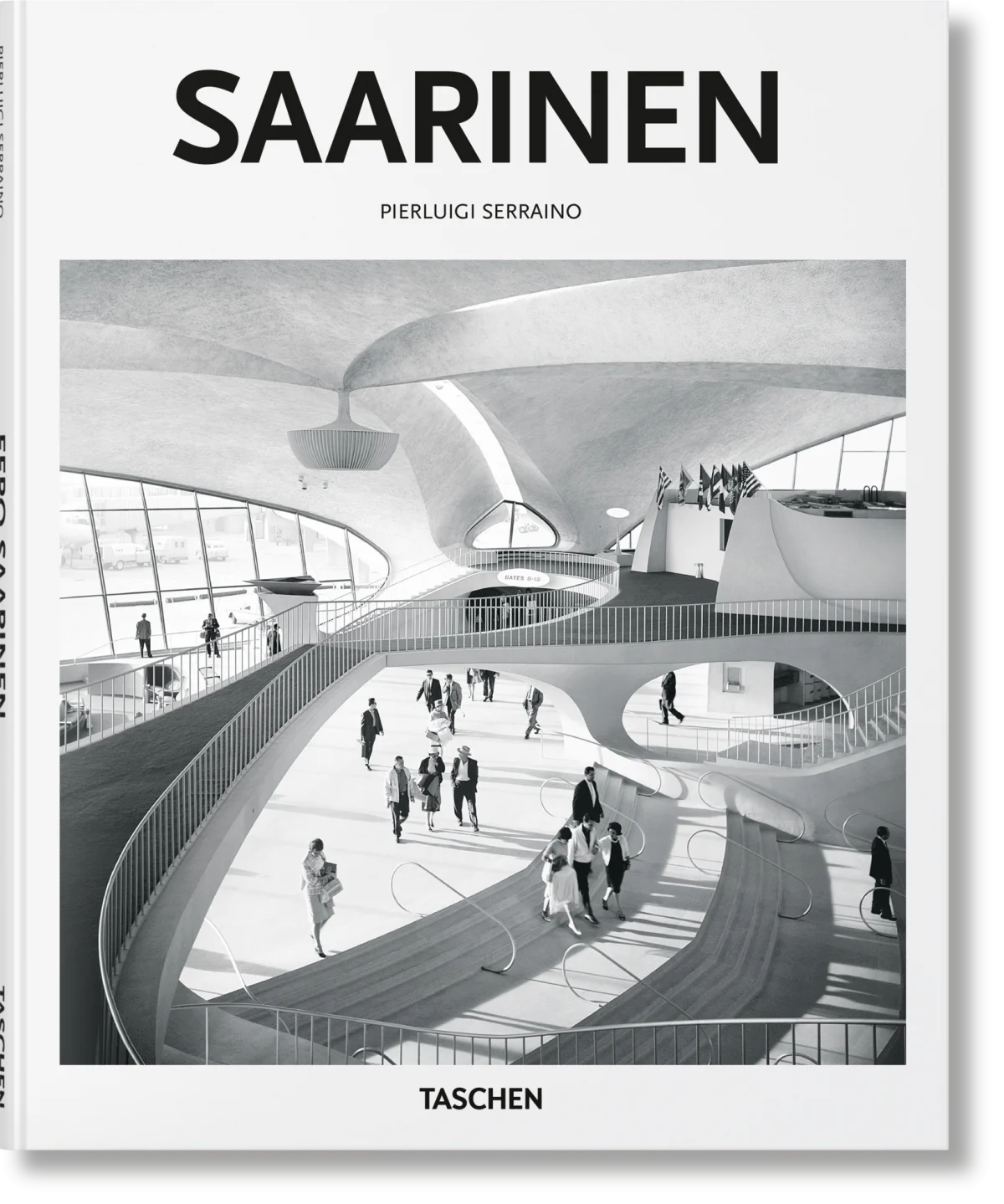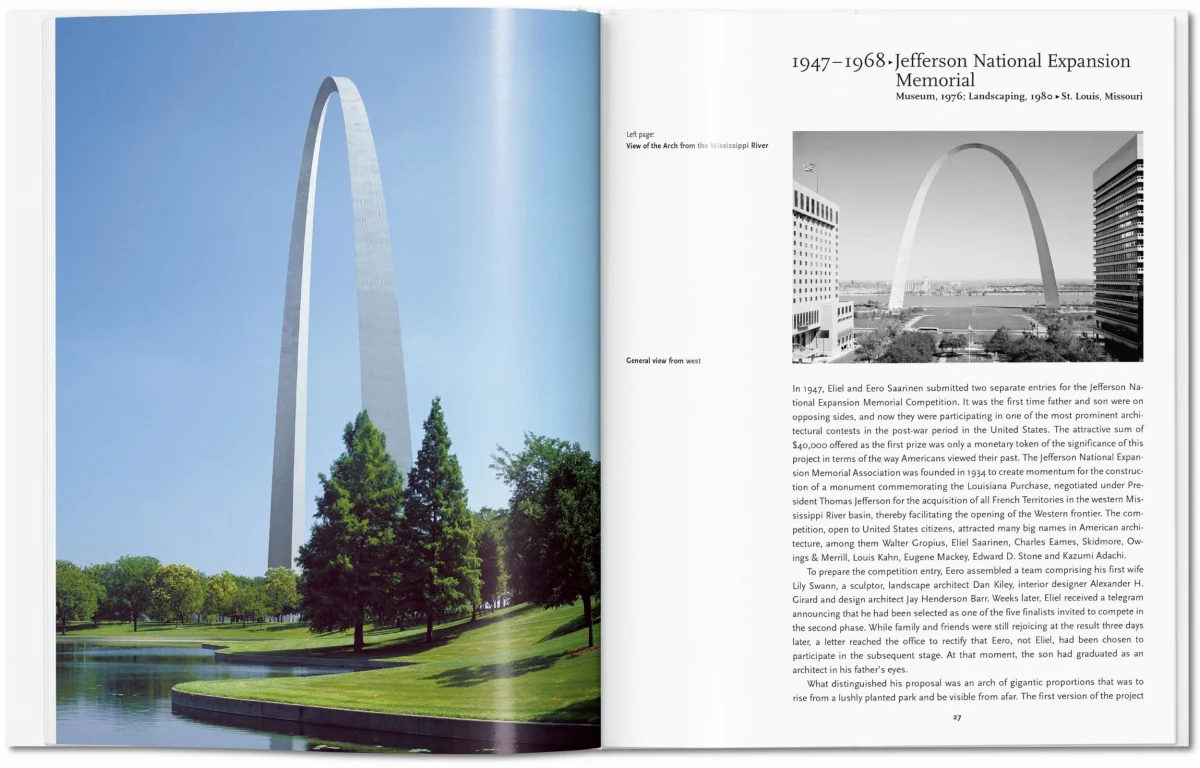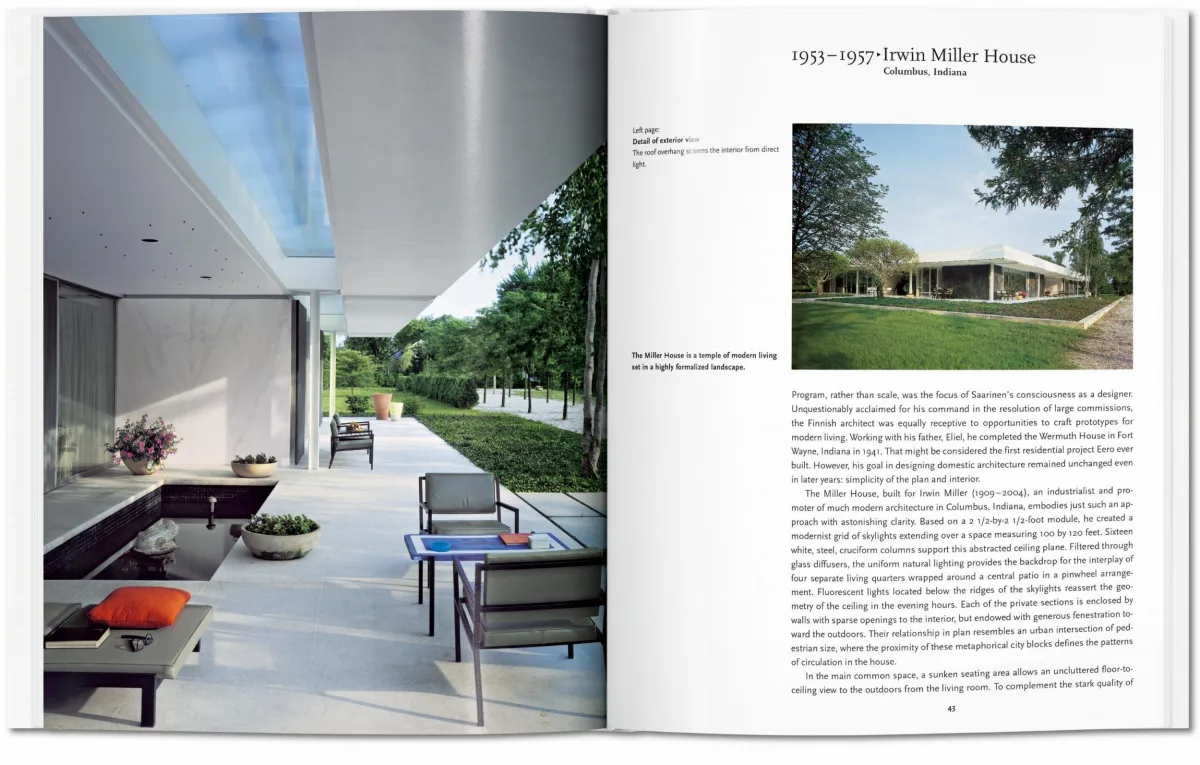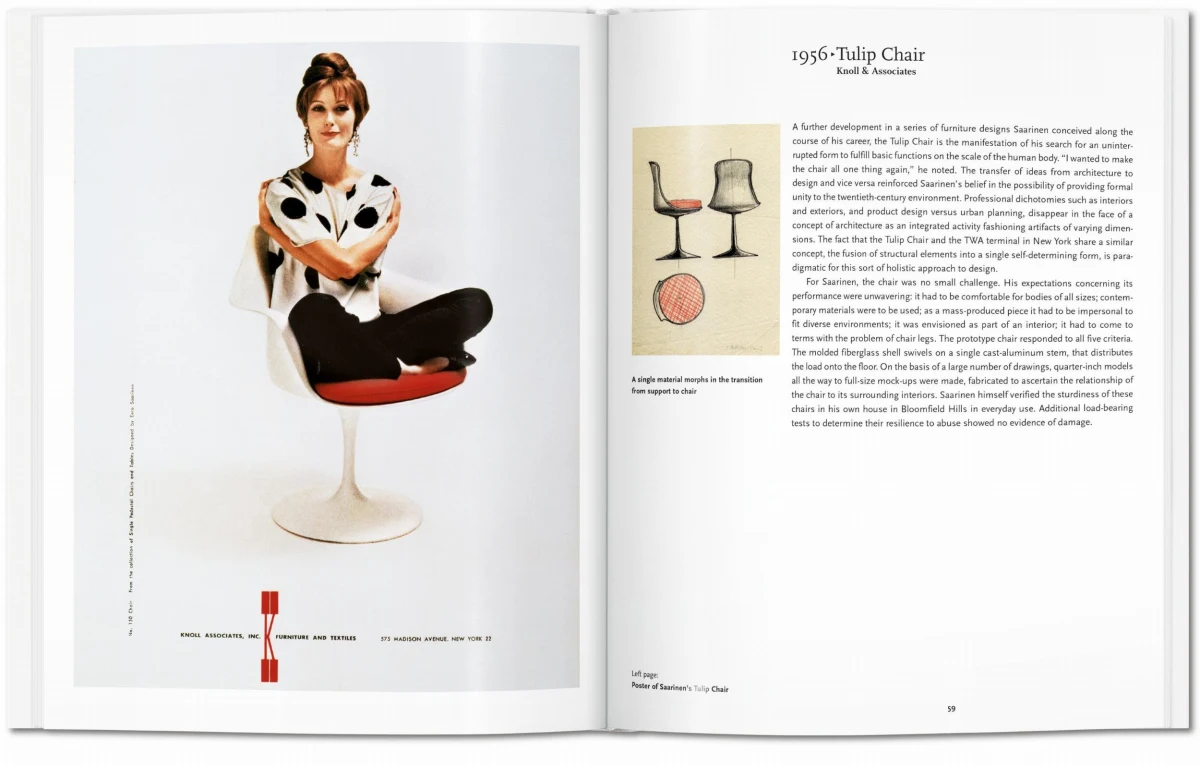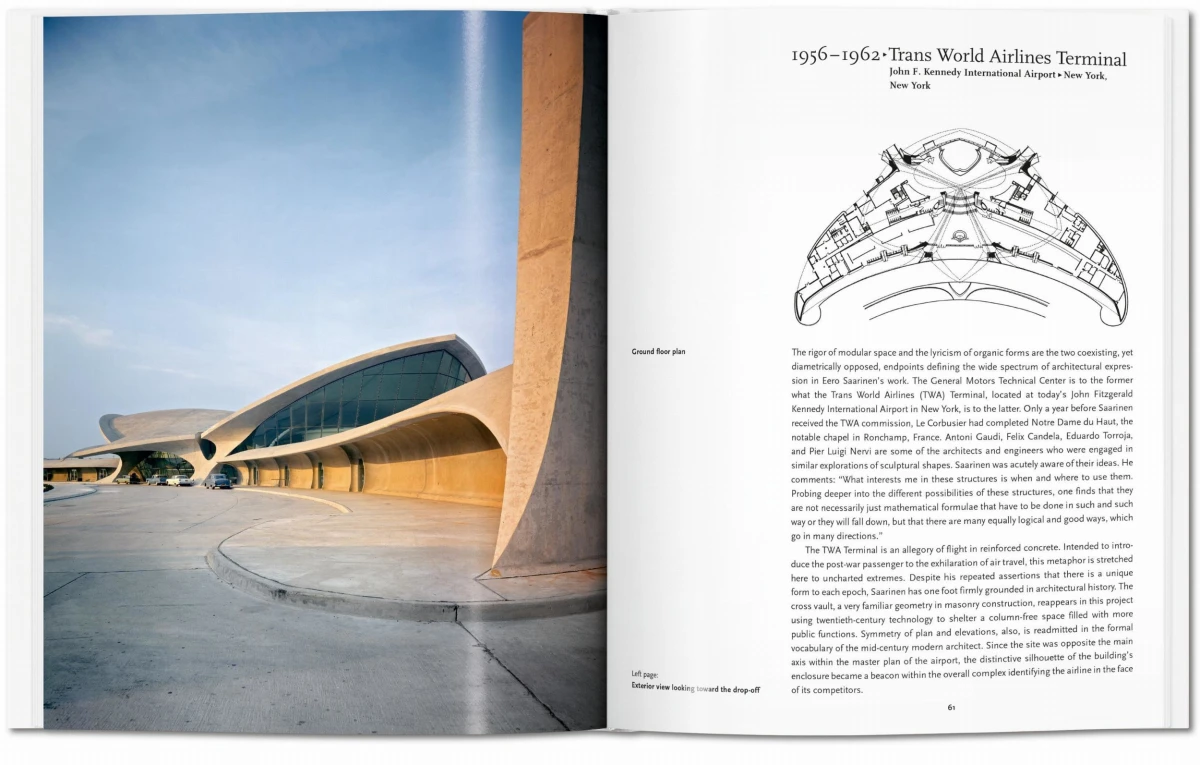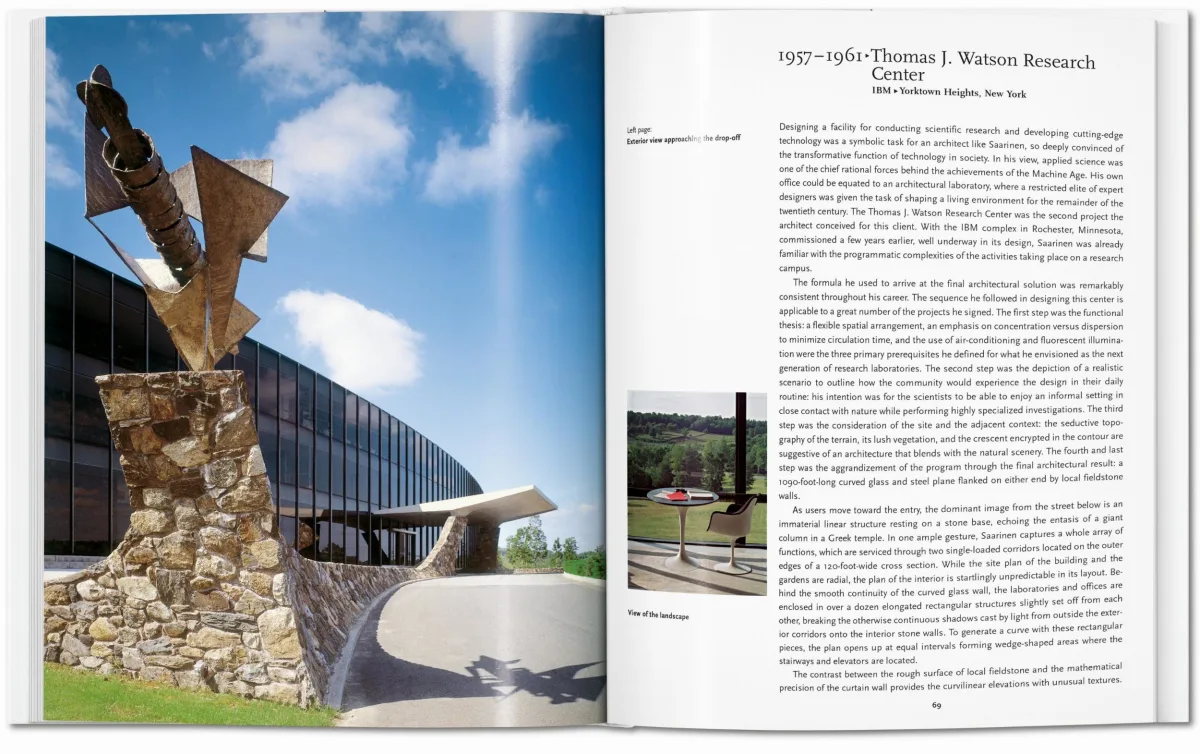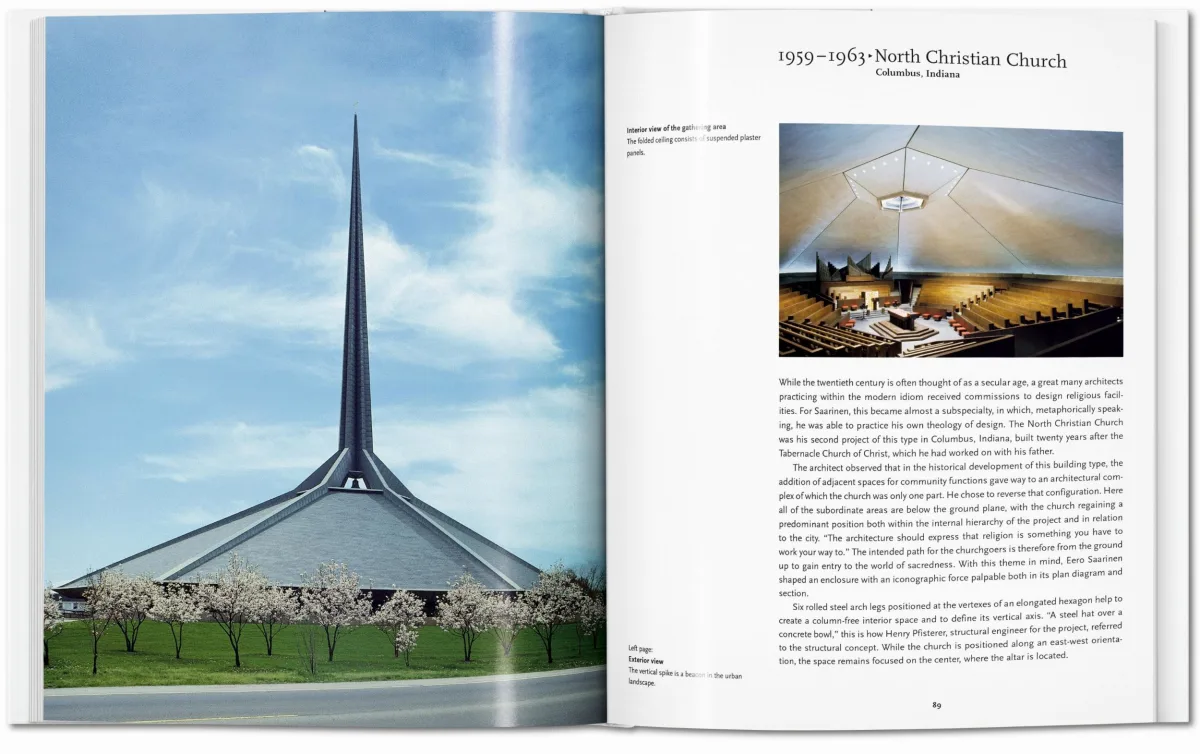Saarinen
20Edition: EnglishAvailability: August 3, 2025
Saarinen
20Sculptural Structures
Eero Saarinen’s new dimensions
Among Saarinen’s greatest accomplishments are Washington D.C.’s Dulles International Airport, the very sculptural and fluid TWA terminal at JFK Airport in New York, and the 630 ft. (192 m) high Gateway Arch of St. Louis, Missouri, each of them defining structures of postwar America. Catenary curves were present in many of his structural designs. During his long association with Knoll, Saarinen’s other famous furniture pieces included the “Grasshopper” lounge chair and the “Womb” settee. Married to Aline Bernstein Saarinen, a well-known critic of art and architecture, Saarinen also collaborated with Charles Eames, with whom he designed his first prize-winning chair.
With rich illustration tracing his life and career, this introduction follows Saarinen from his studies across his training all the way to his most prestigious projects, and explores how each of his designs brought a new dimension to the modernist landscape.
The author
Pierluigi Serraino is a practicing architect and design agitator in the San Francisco Bay Area. His projects and writings have been published in journals such as Architectural Record, A+U (Japan), and The Architectural Review (UK). Among his books are Modernism Rediscovered (2000), Eero Saarinen (2005), The Creative Architect: Inside the Great Personality Study (2016) and Ezra Stoller: A Photographic History of Modern American Architecture (2019).
The editor
Peter Gössel runs an agency for museum and exhibition design. He has published TASCHEN monographs on Julius Shulman, R. M. Schindler, John Lautner, and Richard Neutra, as well as several titles in the Basic Architecture series.
Saarinen
Hardcover, 21 x 26 cm, 0.63 kg, 96 pagesISBN 978-3-8365-4431-3
Edition: EnglishBorn back in 1985, the Basic Art Series has evolved into the best-selling art book collection ever published. Each book in TASCHEN’s Basic Architecture series features:
- an introduction to the life and work of the architect
- the major works in chronological order
- information about the clients, architectural preconditions as well as construction problems and resolutions
- a list of all the selected works and a map indicating the locations of the best and most famous buildings
- approximately 120 illustrations (photographs, sketches, drafts, and plans)
5

